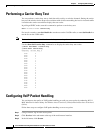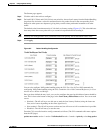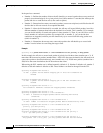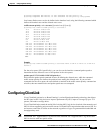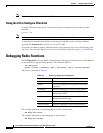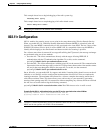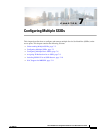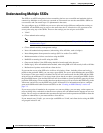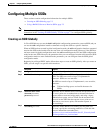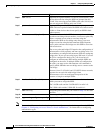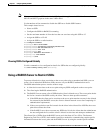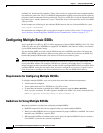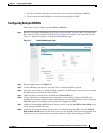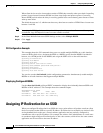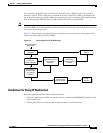
7-2
Cisco IOS Software Configuration Guide for Cisco Aironet Access Points
OL-30644-01
Chapter 7 Configuring Multiple SSIDs
Understanding Multiple SSIDs
Understanding Multiple SSIDs
The SSID is an ASCII string that wireless networking devices use to establish and maintain wireless
connectivity. Multiple access points on a network or sub-network can use the same SSIDs. SSIDs are
case sensitive and can contain up to 32 alphanumeric characters.
You can configure up to 16 SSIDs on your access point and assign different configuration settings to
each SSID. All the SSIDs may be active at the same time; that is, client devices can associate to the
access point using any of the SSIDs. These are the settings you can assign to each SSID:
• VLAN
• Client authentication settings
Note For detailed information on client authentication types, see Chapter 11, “Configuring
Authentication Types.”
• Client authenticated key management settings
• Insert AP authentication parameters (when using AP to AP links, such as bridges)
• Insert Management frame protection settings (802.11w and/or Cisco MFP)
• Maximum number of client associations using the SSID
• RADIUS accounting for traffic using the SSID
• Guest mode (defines if the SSID string should be broadcasted in the beacons
• Define legacy AP to AP authentication method, when using PSK or LEAP security in AP to AP links
• Redirection of packets received from client devices
If you want the access point SSID to be visible to all wireless clients, including clients not having a
profile to that particular SSID, you can setup a guest SSID. The access point mentions the guest SSID
in its beacon. If the guest mode is disabled, the AP will still send beacons for this SSID, but the SSID
string will not be mentioned. If you do not want clients that do not have a preconfigured SSID, disable
the guest SSID feature. Note that the SSID will still be available to clients specifically querying for that
particular SSID string. Clients sending broadcast probe messages will not receive that SSID string in the
AP answer, and will not see the SSID string in the AP beacons. For information on how to configure
guest mode SSID and disable Guest mode SSID, see the “Creating an SSID Globally” section on
page 7-3.
If your access point is intended to be a repeater or a non-root bridge, you can setup, on the repeater or
non-root bridge side, credentials so that the root or primary AP can authenticate the repeater or non-root
bridge. You can assign an authentication username and password to the repeater-mode SSID to allow the
repeater to authenticate to your network like a client device.
If your network uses VLANs, you can assign each SSID to a VLAN, and client devices using the SSID
are grouped in that VLAN.



